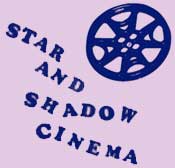Presenting Filmmakers: Pip Chodorov
-
Sat 18 June 2011 // 19:30
/ Cinema
My filmmaking has been exploring several aspects of the medium, the technology and my relationship to it: film diary (shooting spontaneously whatever I feel like capturing); frame-by-frame animation (interested in the single frame and how motion is created); chemical manipulation (hand-working the film seemed to make it more personal); and cutting to music (film is rhythm and the eyes and the ears can be led through a film in or out of sync).
These three films are collaborations with musicians as well as explorations into all these dimensions.
CHARLEMAGNE 2: PILTZER is an attempt to visualize a Charlemagne Palestine piano performance - his fast repeating dissonant intervals and harmonics become flickering colors and retinal overtones.
FAUX MOUVEMENTS (Wrong Moves) works on different neurons in the visual cortex designed to create illusions of motion absent on the filmstrip, with a parallel in spiral music by Gerard Pape.
CHARLEMAGNE 3: PASTRAMI RECORDINGS is a reverse process in which my silent film about New York was set to live music by Charlemagne also using sounds from New York. A feast for ears and eyes, in 16mm!
-Pip Chodorov
Pip Chodorov has been someone we've regularly enjoyed film screenings by at film festivals and other awesome cinemas, so its been a long time coming for him to pay a visit to the Star and Shadow Cinema. Now thanks to a joint effort with the Baltic in organising 'KINETIC COLOUR: ANIMATION & ROBERT BREER SEMINAR', Pip has been brought to Newcastle and will on the evening after this seminar, which is held at the Baltc, be presenting the above films at the Star and Shadow Cinema.
He is a champoin of the experimental and avant garde film makers and we hope that you don't miss the opportunity t see him and his work in your local cinema!
More about the films:
CHARLEMAGNE 2 : PILTZER 2002 16mm coul opt 22’
"On December 9, 1998, Charlemagne asked me to bring friends to his piano concert at an opening at the Gérard Piltzer gallery in Paris, and to bring a movie camera. I shot two rolls of super-8 tri-x at 9 frames per second and recorded the sound on mini-disc. I forgot about the rolls of film and left them undeveloped for a year and a half. When I found them and processed them as negative, I was surprised with the results and I blew them up onto 16mm positive high-contrast stock. I then contact printed the positive 16mm to negative 16mm and optically printed frame by frame through these positive and negative master rolls onto color negative stock through colored filters, following a precise notation of the concert music. I chose the following principles:
- The 6945 notes played in the concert correspond to 6923 frames of super-8 film that were shot. No frames are left out or printed twice.
– Speed of playing controls speed of frame succession.
– Discordant diminished fifths are translated into the following methods of visual discordance for the seven parts of the concert in an attempt to replicate in the visual cortex the harmonic overtones that arise in the temporal lobe when listening:
- Flicker between negative and positive,
- between opposites on color wheel (blue/yellow),
- between opposites in retinal cone sensitivities (red/green),
- between different flicker frequencies (frequencies beating in discordance);
- clusters of b/w negative and monochrome frames to create overtonal retinal afterimages,
- left/right screen masking and mirror image printing,
- crossfading between negative and positive images.
– When more than two notes are played, the additional colors correspond to the complexity of sound frequencies.
The final result is at once a diary film, a document of the concert, a structural flicker film, a hand-processed film, a graphic representation of music, and an attempt to apply cognitive principles in sensation and perception to film art."
- Pip Chodorov
BIO Pip Chodorov. Born April 13, 1965 in New York. Filmmaking and music composition since 1972. Studied cognitive science at the University of Rochester, NY and film semiotics at the University of Paris, France. Work in film distribution - previously Orion Classics, NYC; UGC, Paris; Light Cone, Paris; and, currently, Re:Voir Video, Paris, which he founded in 1994 (www.re-voir.com) and The Film Gallery, the first art gallery devoted excusively to experimental film (www.re-voir.com/gallery). He is also co-founder of L'Abominable, a cooperative do-it-yourself film lab in Paris, and the moderator of the internet-based forum on experimental film, FrameWorks (mail to: listserv@listserv.aol.com, “subscribe frameworks”).
